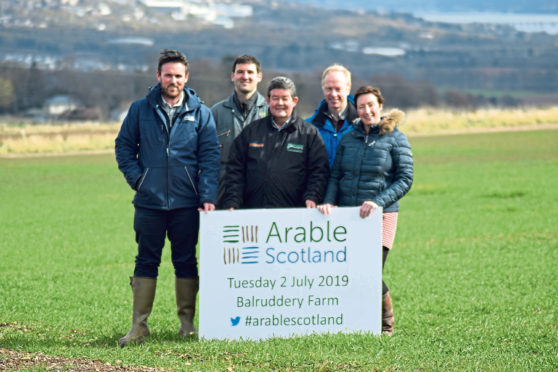A new field-based arable event for Scotland, focusing on innovative and sustainable farming, is to be staged at Balruddery Farm, Invergowrie, on July 2.
Called Arable Scotland, the event is backed by the James Hutton Institute, Scotland’s Rural College (SRUC) and AHDB, with an inaugural programme centred on the production and use of spring barley.
“We wanted to create an exciting new event which will pull together the entire arable industry, allowing those involved in the sector to learn from one another,” said Professor Adrian Newton, senior cereal pathologist at the James Hutton Institute.
“Collaboration will become ever more vital in the future, not only for organisations like ourselves but also for farmers, processors and researchers, across the entire supply chain.
“We need to ensure that we are growing the right varieties for the right markets, that we are protected from the most damaging diseases and that we are producing high-quality, efficient, resilient crops while minimising our environmental impact. Events like Arable Scotland give us the chance to get the entire industry together to discuss what we need to do to thrive, and to really make a difference to the Scottish arable sector,” said Professor Newton.
A number of “arable conversations” will focus on new entrants, sustainable agriculture, future crop production and grain markets and will see industry experts introduce the issues before inviting the audience to join the discussion.
Visitors will tour a range of innovation-focused field plots, as well as studying a mix of indoor and outdoor exhibitors and field-based demonstrations, which will be focused on the four key areas of innovative breeding, quality crops for defined markets, innovative crop management and sustainable farming systems.
“We hope to showcase potential new avenues to growers that they could explore to help make them more productive, profitable and sustainable in the future,” said Professor Fiona Burnett, plant pathologist at SRUC.










